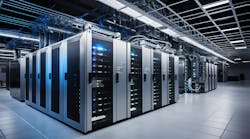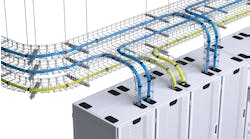Now, More Than Ever, Remote Management of Data Centers Is Essential
Lance Devin, Chief Information Officer at EdgeConneX, highlights how in today’s climate, remote management capabilities for data centers have become even more critical.
Lance Devin, Chief Information Officer, EdgeConneX
If ever there was a time for data center owner-operators and their customers to embrace automation and remote management and monitoring of their infrastructure, that time is now. With most every nation in the world having imposed stay-at-home orders and social distancing policies due to COVID-19, maintaining access to data center infrastructure and the essential communications they support is more critical than ever.
Data centers have never been in higher demand as virtually all of our professional and personal lives move into the digital space. We are witnessing a surge in remote work and media consumption, including significant spikes in data traffic generated from video conferencing, cloud computing applications, streaming media, online education, virtual private networks (VPNs), and online gaming.
From enterprises to hyperscalers providing cloud services, the IT and operations staff of every organization needs to be able to perform routine and preventative maintenance, upgrade capacity, manage vendors, and address technical issues when and if they occur. The ongoing global health crisis has therefore heightened awareness of the ability to remotely manage the data center to ensure the safety of customers, partners, and employees.
However, even before the present crisis arrived, evolving global business demands and the volume, velocity and variety of data traffic flows were already necessitating the reshaping of infrastructure and a rearchitecting of the internet. One noticeable trend has been to augment core processing in hyperscale environments with more processing closer to the edge of the internet. And as before, but especially now, enterprises and hyperscalers require the ability to easily manage, monitor and enable their data center assets and operations, with a secure view into their infrastructure across an expanding global footprint, from anywhere, at any time. This capability is critical for organizations to meet the demands for compute while maintaining business continuity, accelerating IT efficiencies, while ensuring health and safety and a rapidly expanding mobile workforce.
While there are organizations involved in manufacturing and logistics and supply chain management that have instituted operations that require minimal or no staff, such automation has come slowly to the data center industry. Data center infrastructure management (DCIM) tools monitor, measure, manage and control data center utilization and energy consumption of all IT-related equipment, including servers, storage, and network switches, as well as facility infrastructure components such as power distribution units (PDUs) and computer room air conditioners (CRACs). But many of these software solutions are not designed to be monitored and managed remotely across all of their data center deployments, across all locations, and as an unmanned, “lights-out” services.
In a word, today’s data centers need to enhance resiliency, at levels both technological and human, given the current challenges.
This last point is especially significant, because complete automation of the data center means faster response to issues not requiring human intervention. Monitoring and automation also mean that a data center can run with minimal or no staffing required during emergencies or crises like the one we find ourselves in now. For many years, there have been discussions of lights-out data centers, where everything is fully automated, and humans never have to enter the premises. Fortunately, we’ve now moved beyond mere talk into actualizing this capability.
To efficiently operate global data centers remotely and better serve customers, companies are developing data center operating systems that goe beyond the common DCIM platform, like EdgeConneX’ EdgeOS.
This product allows EdgeConneX and its clients to manage, monitor and control their global data center assets, operations, and footprint from a single pane of glass, from anywhere, 24 hours a day.
Putting the customer at the center of operational systems creates operational efficiency and scale to support the fastest response times for every type of customers, regardless of issue, size of deployment, type of customer, need and location.
With solutions like this, it becomes possible to access real-time and historical data down to the cabinet level; identify load balancing issues; view installation through our cameras to monitor works in real-time and to ensure safe operations;communicate effectively with our operations and vendor teams; and order product and services. Data visibility, shared vision, and a single pane of glass results in faster and better solutions through DCIM automation.
Organizations today need their infrastructure to be more nimble and agile, responding readily to any business opportunity or unforeseen contingency, whether that means scaling up or down. In a word, today’s data centers need to enhance resiliency, at levels both technological and human, given the current challenges. Any solution that ties together data center processes and systems, while ensuring the health and wellness of customers, employees, contractors, and vendors — no matter the source of the innovation — is worthy of industry-wide attention and support.
Lance Devin is the CIO at EdgeConneX.





